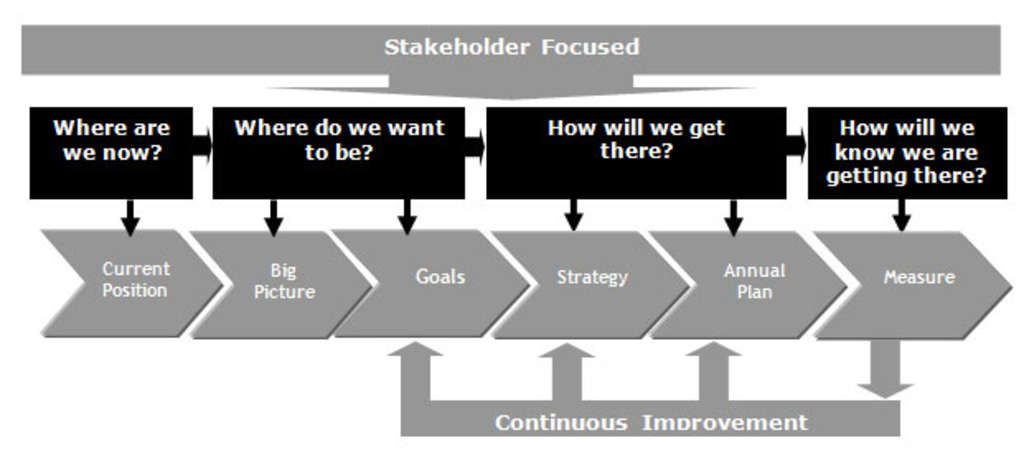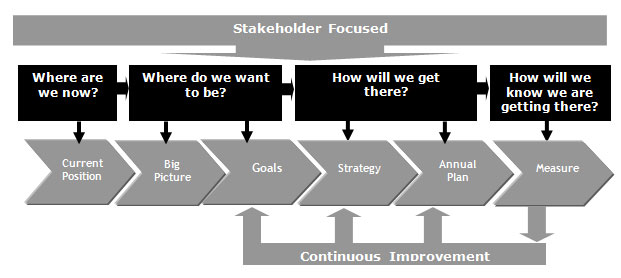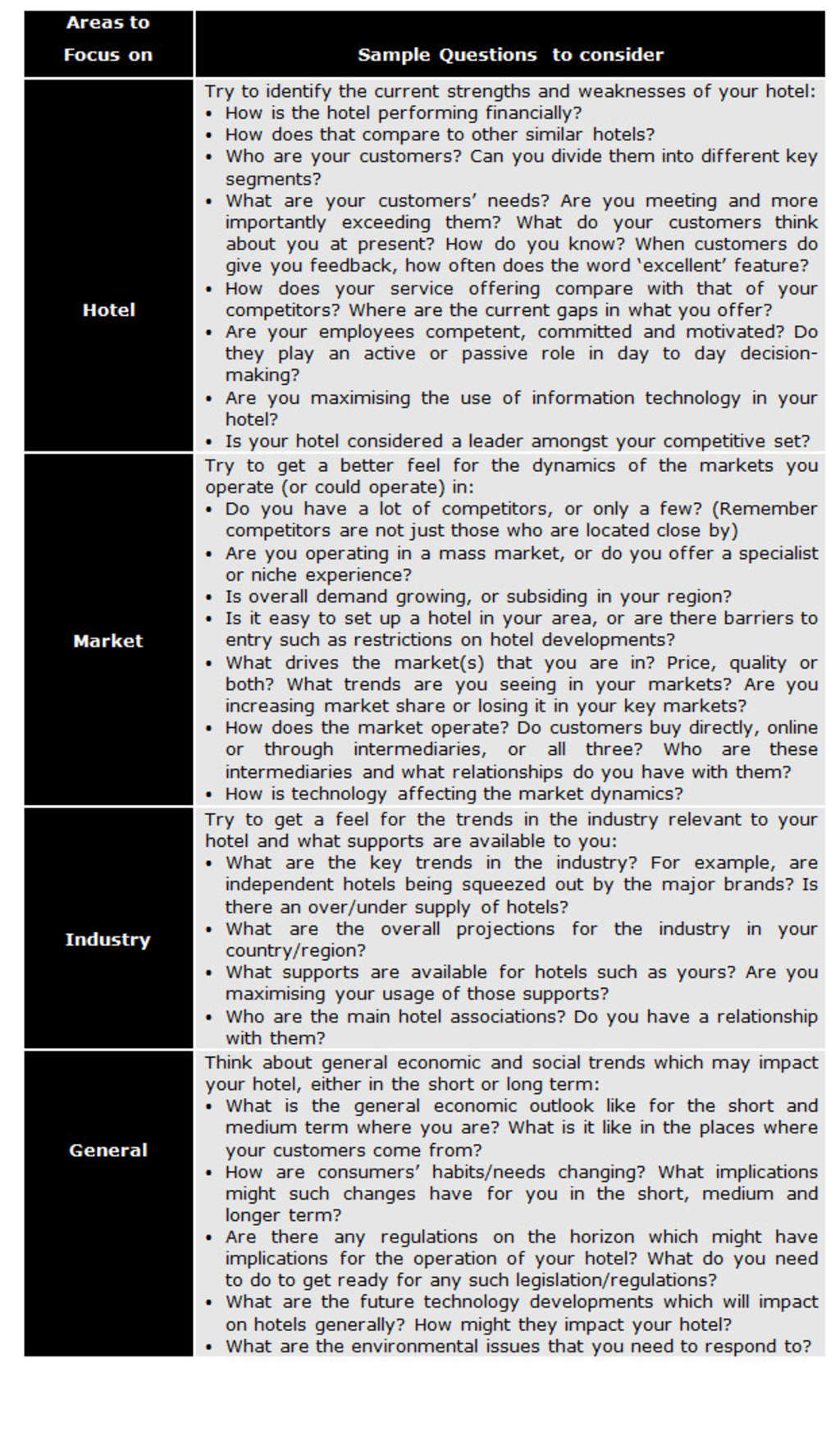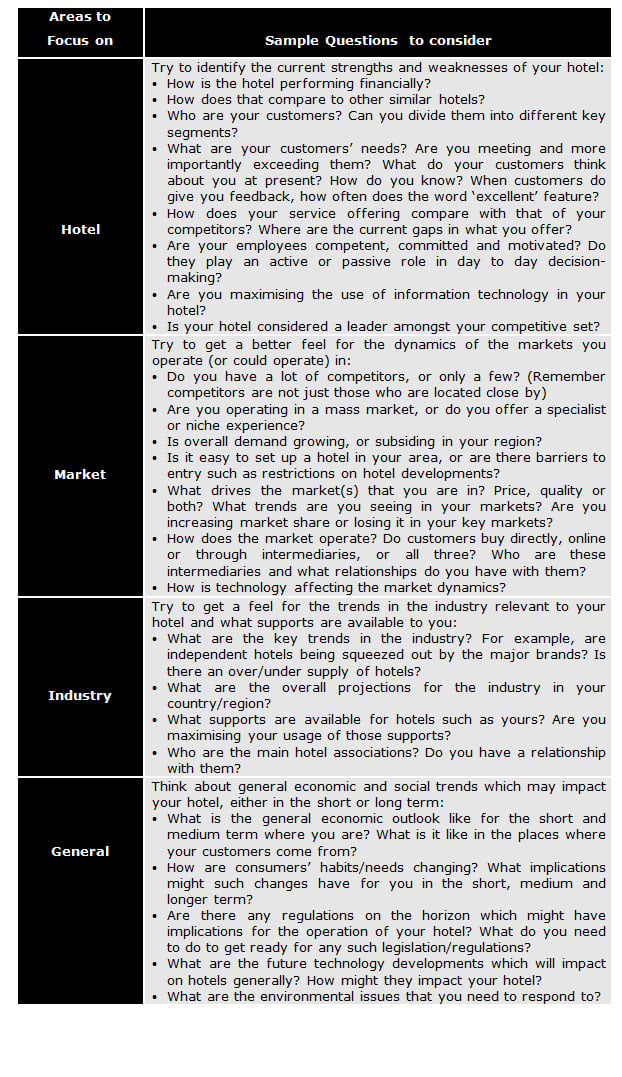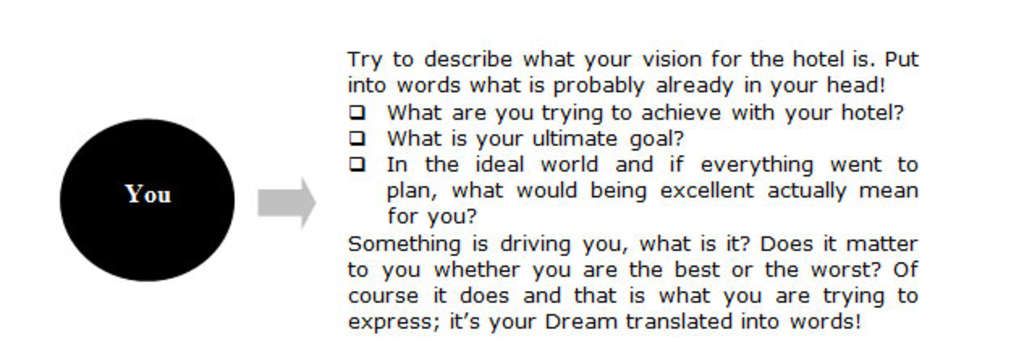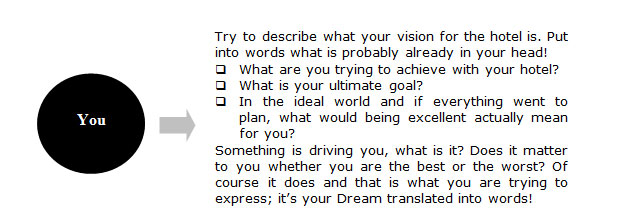Making Sense of Strategic Planning - Part 2
In continuation of his four part series, Enda Larkin explores how to make sense of the strategic planning process, particularly in the context of small and medium sized operations. Part 1 of the series provided the rational for developing a strategic map and Part 2 examines how to start building the strategic map in practice.
Making Sense of Strategic Planning – Part 2
Creating a strategic map, as we saw in Part 1, requires reflection, analysis, action and evaluation guided by four core questions:
The first thing to highlight is that a strategic map includes having a strategy or strategies, but is not limited to that. Strategy tends to get most of the attention, but any strategy is only as good as the information upon which it is based and the resulting measures put in place to realise it.
Where are we now?
Research is not everyone’s cup of tea of course, but the effort is worthwhile because the effectiveness of any future developmental decisions taken will directly correlate to the accuracy of the answers found to these questions.
Preparing a SWOT Analysis
To support later decision making, the research should then be interpreted to identify the positives and negatives. A well known tool for facilitating this analysis is the SWOT matrix which, as you are likely aware, involves summarising:
The current internal strengths and weaknesses of your hotel - which in essence helps you to answer where are we now?
The opportunities and threats you face in the external business environment which will later influence how you answer where do we want to be?SWOT analysis is a widely used, but frequently misused tool. A fairly typical approach to preparing a SWOT in hotels tends to look something like this: a meeting is called where managers sit around the table and everybody chips in what they believe are the strengths, weaknesses, opportunities and threats facing the business. Then, by discussion and agreement the SWOT is finalised. Unfortunately, compiling a SWOT analysis based solely on opinions is of little value; facts are required. Do the research, then prepare the SWOT.
Where do we want to be? – The Big Picture
Getting the most from your vision and mission statements
- Vision is what you ultimately want to achieve in your hotel.
- Mission describes what type of hotel you will operate as you work towards that vision
In other words, vision broadly refers to the destination, whereas mission relates more to the journey and describes the type of hotel you want to operate as you move towards your vision, with reference to your primary stakeholders.
One of the main causes of the scepticism surrounding vision and mission statements is that although many enterprises do prepare them today, they often do little else with them. These written statements are useful as a communication tool, but the real benefits of having a Vision and Mission for any business comes from first developing them and then more importantly living them every day.
It is in the process of developing your vision and mission where the initial benefits arise. Defining what you want to achieve, in consultation with your primary stakeholders is valuable because it forces you to stand back from day to day operations and think about, in broad terms, what your ultimate goal is. It is this process of reflection which adds value, not necessarily what ends up in your statements and the more people in your hotel that you include in the development of vision and mission the better.
Clarifying your vision
It is logical to first define your overall Vision in conjunction with any owners/investors/partners you might have in the business. Begin by thinking about what you want your hotel to achieve:
To give you an idea of what a vision statement might look like, let’s use a fictitious example of a medium sized, independent 4* hotel situated in London. The vision for this hotel could be:
Vision concisely outlines what the general aspirations for your hotel are and should serve as the overall guiding force.
Defining your Mission
Having considered the Vision, it is then useful to prepare the Mission statement for the hotel. The Mission refers to the primary stakeholders and this is where you start translating your stakeholder focus, discussed in Part 1, into words by outlining, again in broad terms, what you are trying to deliver for them. The Mission should describe what you propose to deliver for your primary stakeholders as you work towards you Vision. For our fictitious hotel in London, the Mission might read something like this:
In preparing the vision and mission statements (call them something else if you like) for your hotel, you must naturally keep in mind what you have already learned about your current position when you answered the question where are we now? These statements should challenge you, but at the same time, they need to be founded in realism too.
Whatever you actually come up with in terms of the content of the written statements it’s what you do with them that matters most. As mentioned, unless you really ‘live’ them every day, then they are essentially worthless. In Part 3 of the series, we will examine how these statements can be made to add real value to the business when they are translated in concrete business goals. From that, we will explore how strategies and plans can be developed to realise those goals.
About the Author | Enda Larkin has over 25 years experience in the hotel industry having held a number of senior management positions in Ireland, UK and the US. In 1994 he founded HTC Consulting, a Geneva based firm, which specialises in working with enterprises in hospitality and tourism. Since that time, he has led numerous consulting projects for public and private sector clients throughout Europe and the Middle East. He is author of Ready to Lead? (Pearson/Prentice Hall) and How to Run a Great Hotel (How to Books) which expands on the themes highlighted in this article. He may be contacted via or at [email protected]
